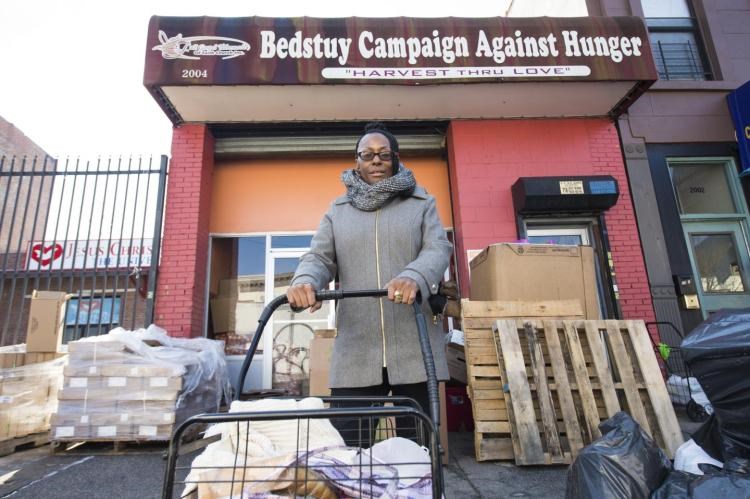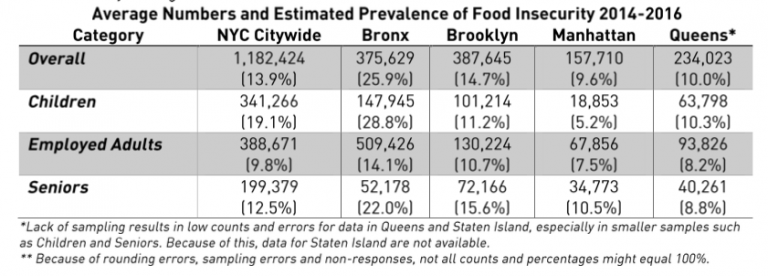The report, released by 'Hunger Free America,' reveals: Brooklyn has the largest number of working adults experiencing food insecurity in NYC

Despite unemployment dropping and wages rising, hunger rates in New York City are still far higher than before the start of the recession in 2008, according to a new report by Hunger Free America. The study, based on food security data provided by the federal government and NYC food pantry data collected by Hunger Free America, reveals that in 2014-2016, 1.2 million working New Yorkers - one in seven of the city's population - lived in food insecure homes.
"While unemployment decreased and wages rose during the last few years of the Obama Administration, it is shameful that America, New York State and New York City all still have higher levels of hunger than before the great recession," said Joel Berg, CEO of Hunger Free America." We still face an epidemic of the 'working hungry.'"
In Brooklyn, 387,645 working adults - one out of every nine - experienced hunger in the years 2014-2016; this is the largest number of food insecure adults out of all the boroughs. The study also shows: 11.2 percent of children and 15.6 percent of seniors in Brooklyn faced food insecurity.

Also, local food kitchens are struggling to keep up with the demand: 38.8 percent of Brooklyn pantries indicated they had to turn people away, reduce the amount of food or limit their hours of operation because they were unable to distribute enough food.
"It is unconscionable that, in the richest city in the history of the world one in five children still can't always count on enough food. It is equally unacceptable that a third of our food pantries and soup kitchens lack the resources to meet the growing need," said Berg. "The sky-high hunger level of New York and America harms health, hampers education, traps families in poverty, fuels obesity, eviscerates hope, and thus drags down our entire economy and places our national security at risk. Hunger harms us all. In contrast, ending hunger lifts us all."
The main source of hunger in the U.S. is people not earning enough money to meet all of their living expenses; according to the Census Bureau, more than four in ten U.S. households have incomes below $50,000 per year. Advocates fear that the situation could worsen if proposed cuts by President Trump such as the slashing of the Supplemental Nutrition Assistance Program (SNAP) became reality.
Hunger Free America is a national nonprofit group building a nonpartisan, grass-roots membership movement to enact the policies and programs needed to end domestic hunger and ensure that all Americans have sufficient access to nutritious food. The full study "Working New York Still Hungry: New York City and State Hunger Report," is available here.



